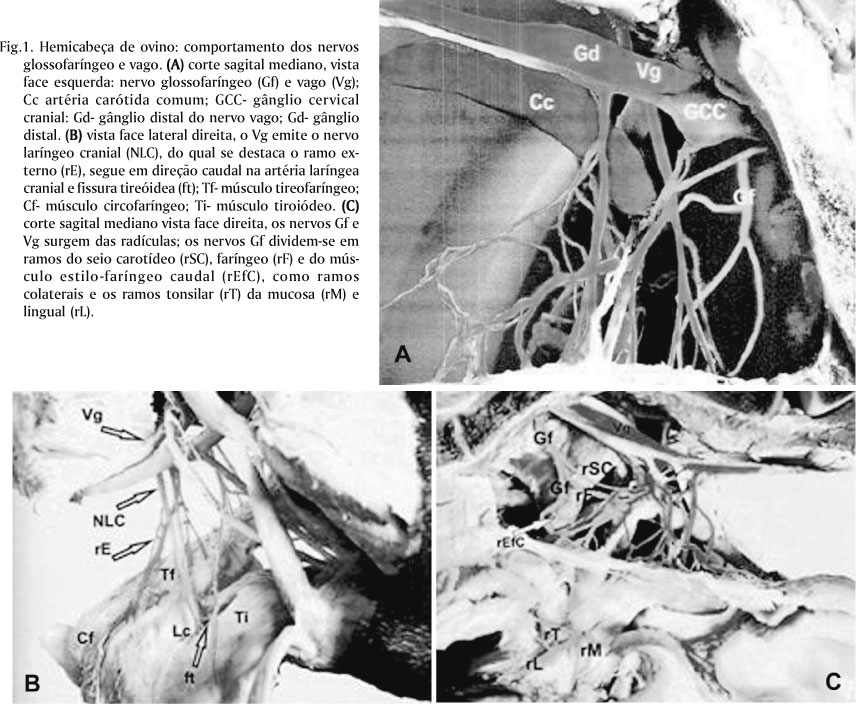In 60 hemiheads of sheep of the Santa Ines breed the apparent origin in the skull of itinerary, ramification and distribution of the glossopharingeal nerve (Gf) and the vagus nerve (Vg) in the retropharyngeal region (Rr) were studied. By fixation and dissection of the specimens it was seen that the glossopharyngeal nerve and the vagus nerve arise from the jugular foramen in 100% of the cases. The right and the left glossopharingeal nerve (Glde) are frequently (86.6%) located more medially to the tympanic bulla, pass caudally to the stylohyoid bone, bypass the margin of the caudal stylopharyngeal muscle, the tonsilla, of the pharyngeal and the lingual mucous membrane. These branches are distributed, respectively, in the carotid sinus, pharyngeal musculature, soft palate, stylopharyngeal muscle, palatine tonsil, pharyngeal mucosa and the caudal third of the tongue (100%). The right and the left vagus nerve run caudally in association with the accessory nerves (Ac) up to the atlas (70%) and go then medially to the occipital artery, dorsally to the common carotid and the sympathetic trunk in the cervical region (80%). The vague nerves have pharyngeal (86.6%) and cranial laryngeal (100%) branches.
Anatomy; sheep; glossopharingeal nerve; vagus nerve


